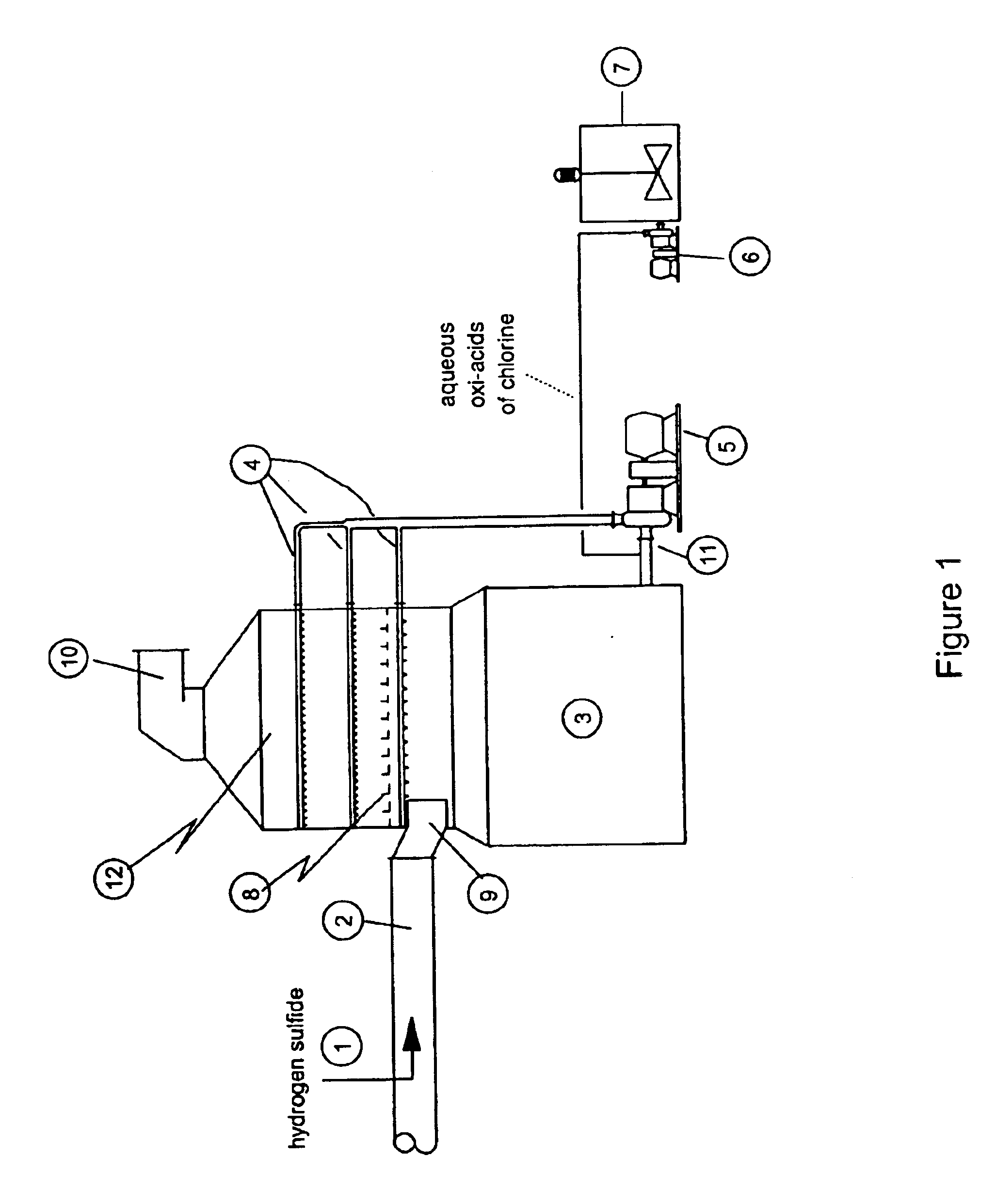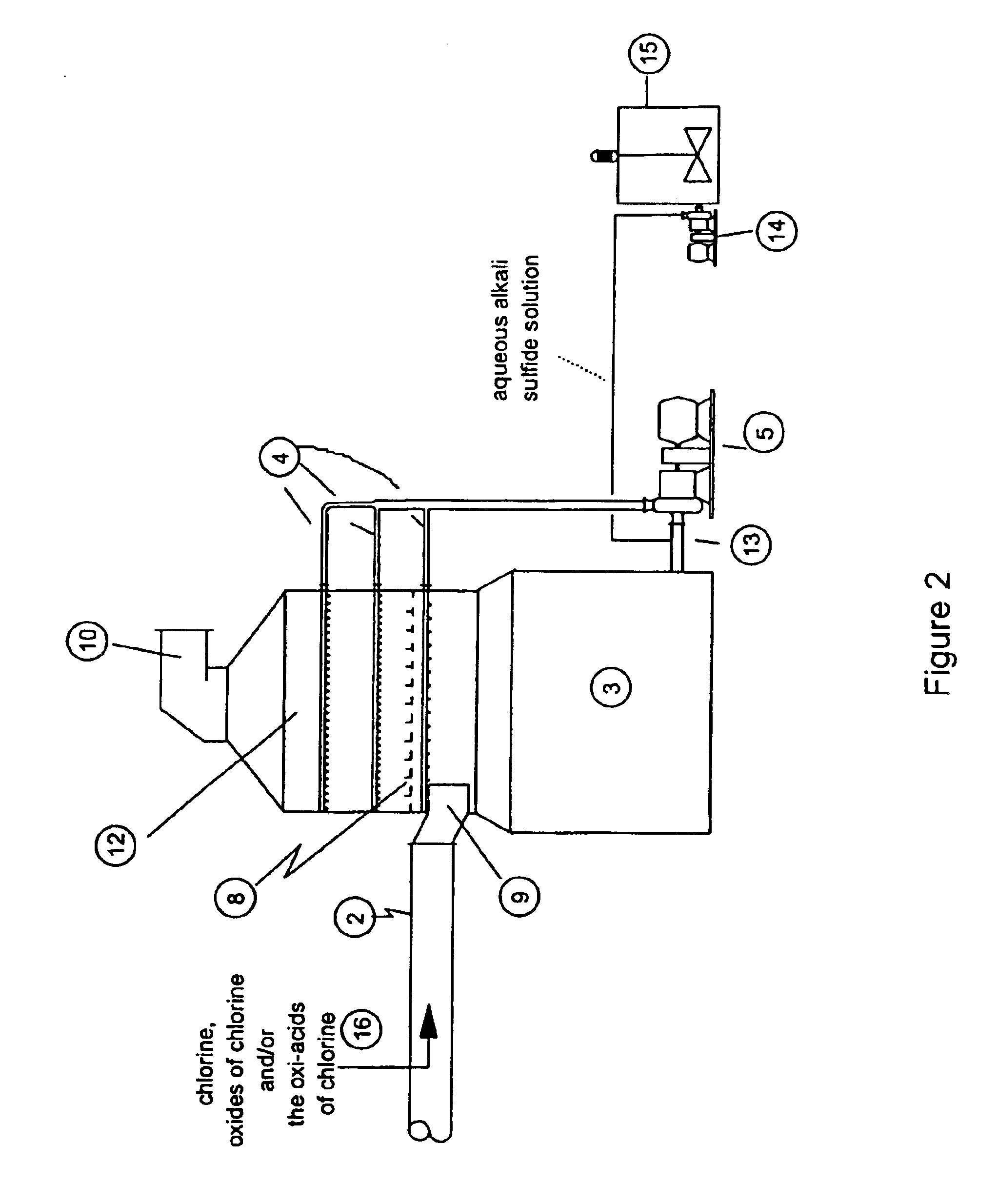Method for controlling elemental mercury emissions
a technology of elemental mercury and emission control, which is applied in the field of controlling elemental mercury emissions, can solve the problems affecting so as to achieve the effect of reducing the oxidation rate of gas species
- Summary
- Abstract
- Description
- Claims
- Application Information
AI Technical Summary
Benefits of technology
Problems solved by technology
Method used
Image
Examples
Embodiment Construction
As disclosed in related patent applications, namely in U.S. patent application Ser. Nos. 09 / 282,817 (“Use of Sulfide-Containing Gases and Liquors for Removing Mercury from Flue Gases,” filed on Mar. 31, 1999) and 09 / 464,806 (“Use of Sulfide-Containing Liquors for Removing Mercury from Flue Gases,” filed on Dec. 17, 1999) incorporated by reference herein, the addition of sulfide species sequesters the oxidized mercury species absorbed into the scrubber liquor. Data shows that gas-phase elemental mercury passes through the wet scrubber, since elemental mercury has an extremely low solubility in aqueous solutions.
However, the total mercury removal efficiency of a wet scrubber is limited according to the speciation of the oxidized phase mercury in the flue gas when using these related inventions. Thus, scrubbers treating flue gas with only half of the mercury in an oxidized form and half in an elemental form will be limited to total mercury removal of about 50%. Converting the elemental...
PUM
| Property | Measurement | Unit |
|---|---|---|
| concentration | aaaaa | aaaaa |
| temperatures | aaaaa | aaaaa |
| combustion efficiency | aaaaa | aaaaa |
Abstract
Description
Claims
Application Information
 Login to View More
Login to View More - R&D
- Intellectual Property
- Life Sciences
- Materials
- Tech Scout
- Unparalleled Data Quality
- Higher Quality Content
- 60% Fewer Hallucinations
Browse by: Latest US Patents, China's latest patents, Technical Efficacy Thesaurus, Application Domain, Technology Topic, Popular Technical Reports.
© 2025 PatSnap. All rights reserved.Legal|Privacy policy|Modern Slavery Act Transparency Statement|Sitemap|About US| Contact US: help@patsnap.com



